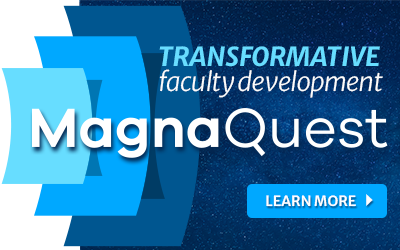Faculty development now more than ever is necessary to an institution’s viability. But as my fellow faculty developers know, the task is not an easy one. Before any effective program can be implemented, three major challenges must be overcome.
Challenge of input/output
One might naturally assume that with such a pressing need for pedagogical revision, instructors would be breaking down the doors of faculty development offices, demanding to be retrained. The reality is that oftentimes workshop events are organized—speakers are invited (and often paid), food is catered, rooms are reserved, schedules are put in place, advertising is sent out across multiple media—and just a few people show up.
Challenge of scope
As noted above, academia is currently undergoing some massive changes. Chief among those is technology, particularly online education, which runs the gamut from typical online courses to blended learning to massive open online courses (MOOCs). And then there are mobile and tablet computing, flipped classrooms, and social media, each one of which has been touted in countless articles for its pivotal role in revolutionizing education. But what about the substance of education, such as crafting strong learning objectives, designing meaningful assessment opportunities, and connecting one with the other? There must be a balanced and comprehensive fluency with both technology and pedagogy, and that is no small feat for an educator to learn or for a faculty developer to teach.
Challenge of culture
As is the case at my institution and at most others across the country, professional development is purely elective. And with the intense demands of teaching loads, committee obligations, and research agendas, why would an instructor spend two precious hours of the week learning about “the latest teaching fad that will probably disappear in six months, when what I’ve been doing for the past 20 years works just fine for me”?
So what’s the solution?
After struggling with the three challenges outlined above, I have found that, yes, there are ways to make faculty development work. Below is a list of recommendations that taken together can transform any faculty development program from rusty to robust.
Create learning opportunities that are accessible anytime, anywhere. Even if an instructor is highly motivated to attend a workshop, scheduling conflicts can get in the way. Just as online learning allows a student to take an exam at 1:00 a.m. in his pajamas, online faculty development allows an instructor to do likewise. The reason the traditional faculty development model of “come to my workshop, please” so often fails is the same exact reason the “sage on the stage” model of teaching fails: We’re not reaching the audience on their own turf.
Make it collaborative. If they are in a learning space that allows faculty to feel that they are building knowledge and skills alongside their peers, they are less likely to suffer from ego deflation. For virtual workshops, feature chat boxes and shared screens; for asynchronous workshops, create discussion boards; for in-person workshops, allow time for small-group discussion. When faculty are given opportunities to create knowledge alongside their peers, the experience is that much more meaningful and worthwhile.
Make it relevant. Unilaterally deciding what would make for good topics is one way of planning a professional development calendar—indeed, a poor one. Meet with departments across campus and get input directly from faculty about what they would like to see offered; you may be surprised by what the most popular topics are. Especially for faculty developers who do not share the same experiences as faculty themselves, this is key to planning your next season of workshops. Because if faculty see no inherent value in the topics being offered, then all the other roadblocks are moot—they simply won’t want to go.
Build relationships. This one can take time and requires that extra effort, but it can have the biggest payoff. Even the best programs will see better turnout if you can develop strong relationships with faculty and administrators (particularly deans and department chairs). The more they see you working with them to achieve development goals, the more involved with and committed they will feel to making it all work. They will understand that faculty developers are partners, not didacts.
Of course, the above suggestions are just that—suggestions. There is no one-size-fits-all approach to faculty development. A number of factors such as campus size, funding, and available technology all can vary widely and impact how programs are executed. But improvements can always be made, and these suggestions are a great place to start. A well-developed faculty is key to an institution’s ability to stay relevant and effective, and faculty developers play a vital role in ensuring that.
James Kowalski is the faculty development specialist at Chicago State University. He holds a master of science in education and social policy from Northwestern University and a bachelor of arts from the University of Chicago.
Adapted from “From Rusty to Robust: Overcoming the Challenges to Effective Faculty Development” in Academic Leader 29.1(2013)1,6 © Magna Publications. All rights reserved.



